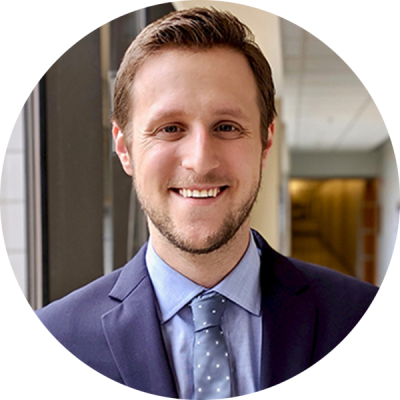
Scott Albert
Every movement begins and ends in a period of stillness. In the Laboratory for Computational Motor Control (the Shadmehr Lab), we study how the brain controls these different periods of motor activity. While decades of research have demonstrated that one area of the brain, the primary motor cortex, is critical for the execution of a movement, we know comparatively little about how the brain holds the arm still in a desired posture. In our recent work, we wondered if the brain holds the arm still using a strategy similar to that of the eye. For the eye, there are some neurons that produce a “moving” signal that corresponds to the velocity of the eye. However, there is a separate set of neurons that produce a “holding” signal that corresponds to the position of the eye. Much like the formula “distance equals rate multiplied by time,” the holding neurons calculate the “holding” signal by mathematically integrating the “moving” signal over time. Through a sequence of experiments involving over 200 healthy humans, 14 stroke patients, and four non-human primates, we discovered that a very similar integration process is used to hold the arm still. Critically, because reach integration was unimpaired in patients who suffered from cortical strokes, our work suggests that there are separate areas of the brain that move the arm and hold the arm still, as for the eye. These findings may help us understand why some neurological conditions can lead to impairment in movements and abnormal postures.
Questions & Answers
Why did you choose Johns Hopkins for your work?
When choosing a graduate program, Johns Hopkins stood out to me as an institution where biomedical research is truly intertwined with clinical practice. As a biomedical engineering student, I was afforded the chance to study the brain alongside first-year medical students, learning how to understand and treat the part of the body at the center of my work. Also, I knew that working at an institution where there are so many people that are better than me would be the best environment to train and form lifelong collaborations.
What does receiving this award mean to you personally and professionally? Do you have any connection with the particular award you received?
It is humbling to have contributed an idea that may help neuroscientists to understand how the brain controls our movements. Others in my lab have also been designated with this award, and I am very proud to be continuing that legacy. Mette Strand, Ph.D., was a pioneer in developing new treatments for parasitic diseases, HIV and cancer. As a cancer patient who was successfully treated for Hodgkin’s lymphoma during my graduate studies, it means a lot to be honored in the name of someone who worked so tirelessly to save the lives of so many people.
What contributed to your project’s success?
This work was made possible by an incredible array of individuals, and a collaboration across several universities including Johns Hopkins (Reza Shadmehr, Jihoon Jang, Alkis Hadjiosif and John Krakauer), Newcastle University (Demetris Soteropoulos and Stuart Baker) and Columbia University (Andrew Zimnik and Mark Churchland). In addition, we benefited from the generosity of many stroke patients who all contributed their time to this work. Fittingly, this work was built on the ideas of an incredible neuroscientist, David Robinson, who helped found the Department of Biomedical Engineering at Johns Hopkins but unfortunately passed away before we could show him the similarities between the arm and the eye.
What thoughts do you have about Young Investigators’ Day itself, as a celebration of the roles students and fellows play in research at Johns Hopkins?
I have had the fortunate opportunity to attend the Young Investigators’ Day ceremony several times in the past. Even as an audience member, I have always found the day to be incredibly inspiring, and a great reminder of the incredible breadth of talent possessed by the trainees at Johns Hopkins, as well as the way our school supports their success.
What has been your best/most memorable experience while at Johns Hopkins?
In the Shadmehr Lab, I have immensely benefited from the camaraderie of my fellow trainees. As a close-knit scientific family, we have lunch together each and every day, where we talk about our lives, our interests, and of course, the brain. I will forever miss this time spent clamoring around the table in Traylor 416.
What are your plans over the next year or so?
I am fortunate to have recently defended my dissertation, and to have accepted an offer to become a postdoctoral fellow continuing in the Laboratory for Computational Motor Control. After this, I plan to continue my postdoctoral studies at a different institution while further developing new skills in the study of the neural control of movement, before eventually looking for a faculty position within academia.
Tell us something interesting about yourself.
Baltimore was such an incredible place to have spent the last several years of my life. During my time here, I have played on countless soccer teams, played trumpet in the Wind and Jazz Ensembles at Johns Hopkins, volunteered with Thread, acted in a musical with the Hopkins Barnstormers, and met a tremendous number of kind, caring and talented individuals.